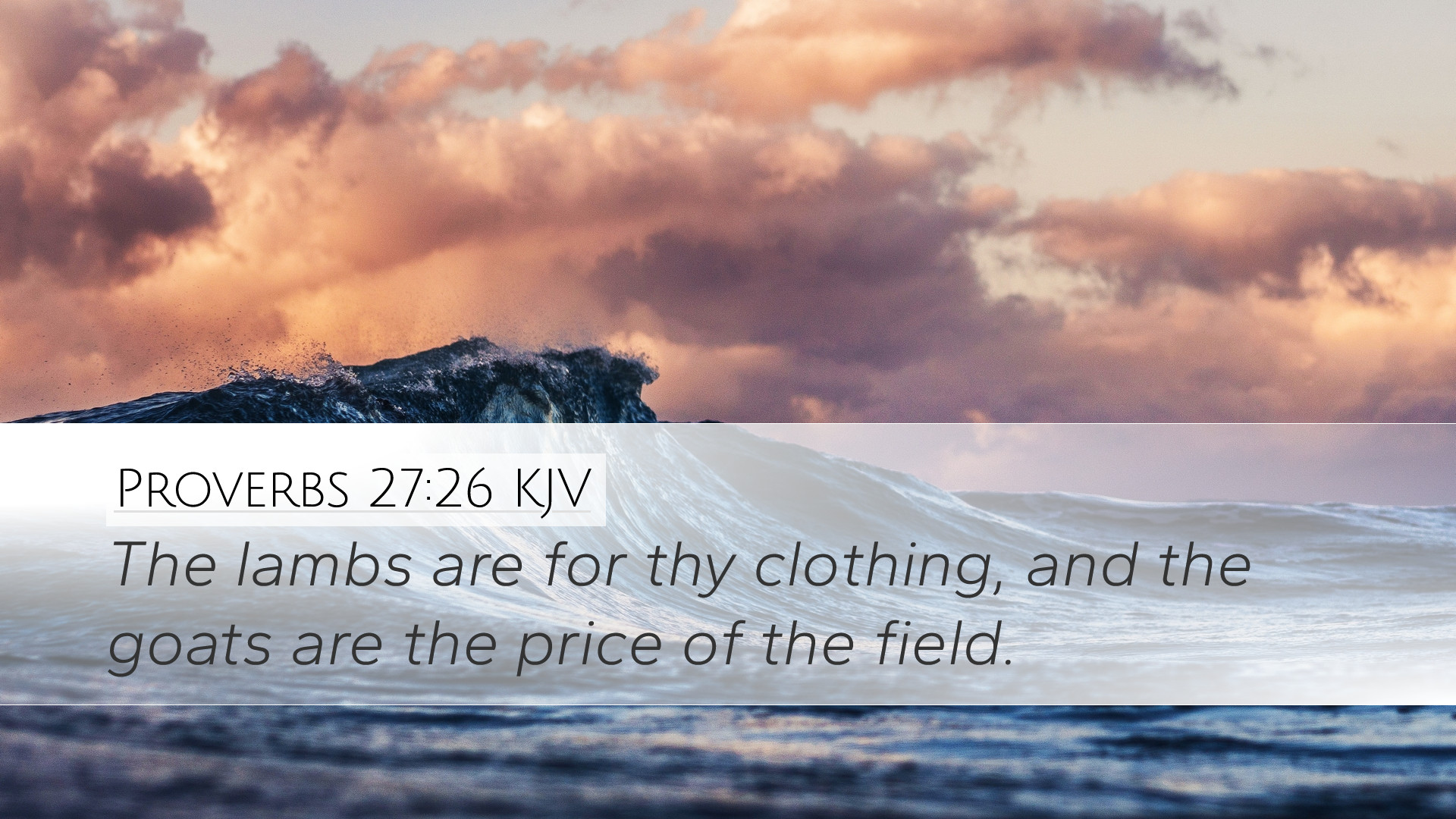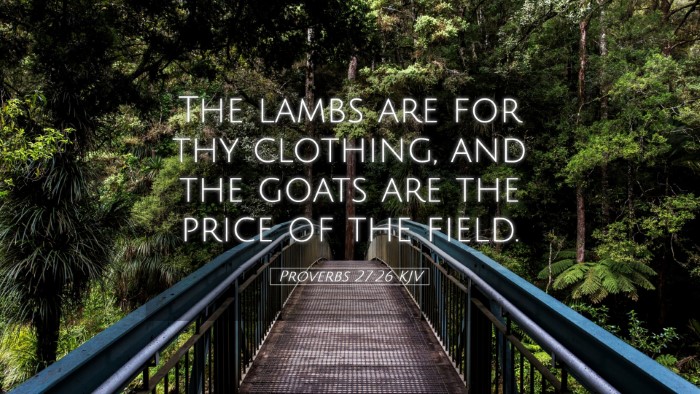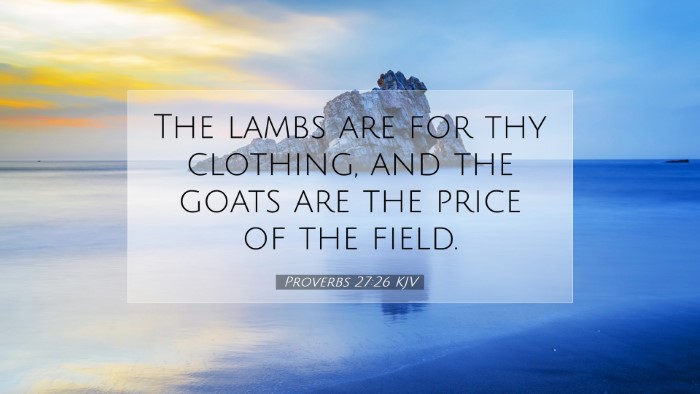Commentary on Proverbs 27:26
Proverbs 27:26 states, "The lambs are for thy clothing, and the goats are the price of the field." This verse highlights the agricultural context of ancient Israel and draws attention to the economic and social implications of livestock ownership.
Contextual Overview
In the Book of Proverbs, wisdom literature is employed to provide practical insights into life, morality, and righteousness. This particular verse captures a snapshot of domestic and community life, emphasizing the interconnectedness of agriculture, economy, and daily living.
Insights from Matthew Henry
Matthew Henry elaborates on this verse by emphasizing the importance of livestock in the sustenance and livelihood of a household. He argues that the mention of lambs and goats serves as a metaphor for the blessings that God provides:
- Lambs: Often seen as symbols of innocence and purity, Henry notes that lambs provide warmth through clothing and sustenance through meat.
- Goats: He points out that goats represent economic investment as their value is often realized through breeding and sellable products such as milk and wool.
Henry concludes that these animals symbolize the blessings found in modest circumstances and the divine provision required for both physical and spiritual needs.
Insights from Albert Barnes
Albert Barnes provides a practical interpretation of this verse, focusing on the implication of diligence in managing one’s resources:
- Resource Management: Barnes emphasizes how the careful stewardship of one’s property and possessions leads to prosperity. The lambs provide for clothing, indicating that careful use and management lead to tangible benefits in life.
- Field and Wealth: The field's price indicates that wise decisions in investments and land management yield fruitful returns, advocating for the principle of hard work and the inherent value of agricultural life in Israel.
He encourages readers to recognize the importance of practical wisdom and diligence in everyday tasks, as these actions have significant consequences in the prosperity of one’s household.
Insights from Adam Clarke
Adam Clarke provides a comprehensive analysis of the verse by examining the social dimensions of livestock ownership among ancient Hebrews:
- Social Implications: Clarke highlights that the lambs rode on social relationships. They were often part of communal festivities and sacrificial offerings, thus serving both a personal and communal purpose.
- Symbol of Wealth: Goats were pivotal to financial standing; their procurement represented not just wealth but also responsibilities towards others, emphasizing the interconnected nature of prosperity.
Clarke suggests that understanding the symbolism of these animals helps readers gain insight into the socio-economic fabric of the time and illustrates broader spiritual truths regarding God’s provision.
Theological and Practical Application
When taken together, these commentaries shed light on several theological and practical applications for pastors, students, and scholars:
- Divine Provision: All three commentators reflect on God's provision in believers' lives, affirming that through wise management, one can experience God’s blessings. This points to God's ongoing care and support.
- Stewardship: The notion of stewardship emerges as a core principle. Pastors can encourage congregants to view their resources—time, talent, and treasure—as entrusted to them for cultivation and growth.
- Community and Relationships: Clarke's view on the societal role of livestock highlights the significance of building community connections through shared resources. Pastors may encourage collaboration and mutual support among congregants.
- Economic Wisdom: Effective and diligent resource management, as discussed by Barnes, serves as a reminder of the role of hard work in achieving success and fulfilling God’s purpose in life.
Conclusion
In summary, Proverbs 27:26 offers profound insights into the practical aspects of life, suggesting that blessings come through God’s provision, wise management, and the recognition of community interdependence. Through the lenses provided by Henry, Barnes, and Clarke, readers gain a rich understanding of this verse's implications in spiritual, economic, and social contexts, which are relevant for today’s believers.


